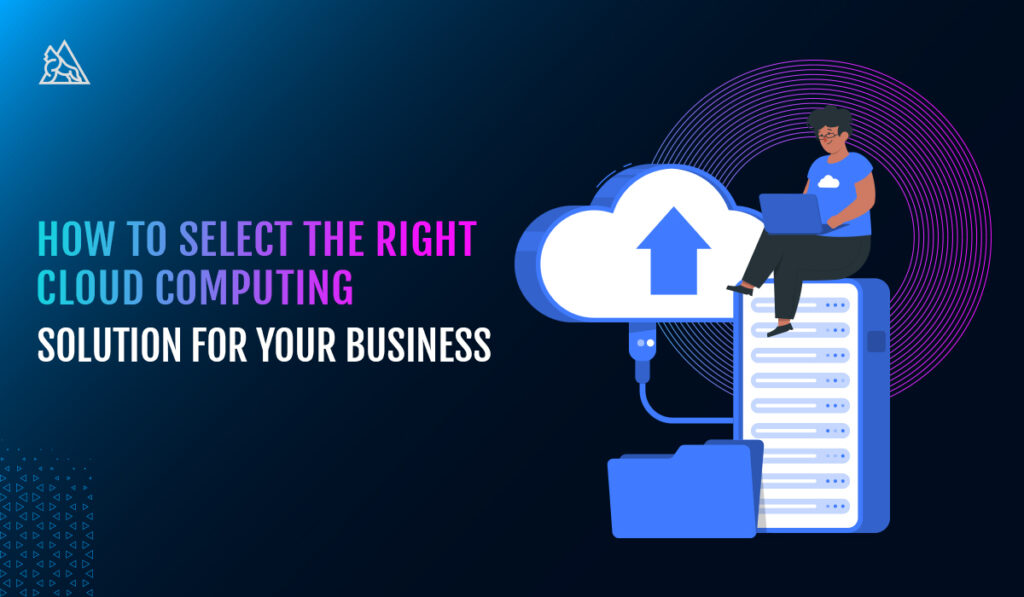Cloud computing has transformed the way businesses operate, offering scalability, flexibility, and cost-efficiency. However, selecting the right cloud solution is not a one-size-fits-all decision. The wrong choice can lead to performance issues, security vulnerabilities, or unexpected expenses. To ensure a seamless transition, organizations must carefully evaluate their cloud computing options based on their specific needs, budget, and long-term goals.
This guide will break down the key factors to consider when evaluating cloud computing solutions, helping you make an informed decision that aligns with your business objectives.
Understanding Your Business Needs
Before exploring different cloud solutions, it is essential to assess your organization’s unique requirements. A clear understanding of your goals will help you determine whether cloud adoption is the right choice and, if so, which model best suits your operations.
Start by defining your business objectives. Are you looking to cut IT infrastructure costs, improve scalability, or enhance remote accessibility? Consider your existing workloads—some applications may be cloud-ready, while others require optimization before migration. Additionally, certain industries have strict compliance requirements that influence cloud adoption. Healthcare organizations must comply with HIPAA, financial institutions need to meet PCI-DSS standards, and e-commerce businesses must adhere to GDPR regulations.
Security and regulatory concerns also play a major role. If your company handles sensitive customer data, you may require a private or hybrid cloud solution with advanced security features. Understanding these factors will help narrow down your options and ensure a smooth cloud transition.
Types of Cloud Computing Solutions
Cloud computing comes in various deployment models, each catering to different business needs.
Public Cloud Solutions
Public cloud solutions, such as AWS, Microsoft Azure, and Google Cloud, are hosted by third-party providers and offer cost-effective scalability. These solutions are ideal for startups, SaaS businesses, and organizations that require rapid expansion without the burden of infrastructure management.
Private Cloud Solutions
Private cloud solutions, on the other hand, provide a dedicated environment tailored to a single organization. This model offers enhanced security and control, making it a preferred choice for industries with strict regulatory requirements, such as finance and government agencies. While private clouds provide greater customization, they often come at a higher cost compared to public cloud services.
Hybrid Cloud Solutions
Hybrid cloud solutions combine public and private cloud elements, allowing businesses to store sensitive data in a private environment while leveraging the scalability of the public cloud. This model is ideal for organizations that want to maintain control over critical workloads while benefiting from the flexibility of cloud computing. Multi-cloud strategies take this a step further by utilizing multiple cloud providers to avoid vendor lock-in and enhance resilience. Large enterprises often adopt this approach to optimize cost and performance across different platforms.
Key Factors to Evaluate Cloud Solutions
When evaluating cloud computing solutions, performance and reliability should be at the top of your list. Uptime guarantees, latency considerations, and the ability to scale resources seamlessly can significantly impact business operations. Service Level Agreements (SLAs) provided by cloud vendors should be carefully reviewed to ensure minimal downtime and consistent performance.
Security and compliance are equally important. Data encryption, access controls, and identity management features help protect sensitive information. Organizations should also verify whether a cloud provider meets industry-specific compliance standards, such as GDPR, HIPAA, or SOC 2. A lack of compliance could lead to legal complications and potential security breaches.
Cost is another critical factor. Cloud pricing models vary between pay-as-you-go structures and fixed subscription plans. While cloud computing can reduce upfront infrastructure costs, hidden expenses such as data transfer fees, API calls, and over-provisioning of resources can add up quickly. Businesses should conduct a Total Cost of Ownership (TCO) analysis to compare cloud expenses with existing on-premises infrastructure.
Scalability and flexibility are essential for growing businesses. The ideal cloud solution should support increased workloads without requiring constant manual intervention. Features like auto-scaling, resource allocation, and hybrid cloud integration can improve operational efficiency. Additionally, compatibility with existing IT systems should be assessed to avoid migration challenges.
Customer support and service quality should not be overlooked. A reliable cloud provider should offer 24/7 technical assistance, quick response times, and a range of support channels. Some providers also offer managed services, which can reduce the burden on internal IT teams by handling cloud infrastructure maintenance.
Comparing Cloud Service Providers
Selecting a cloud provider depends on your organization’s priorities. Amazon Web Services (AWS) is one of the most mature cloud platforms, offering a vast range of services and global availability. It is a popular choice for enterprises and developers looking for extensive cloud capabilities.
Microsoft Azure is well-suited for businesses that rely on Microsoft products such as Office 365, Windows Server, and SQL databases. Its seamless integration with existing Microsoft ecosystems makes it a preferred option for organizations familiar with Microsoft’s software stack. Azure also provides strong hybrid cloud support for businesses transitioning from on-premises infrastructure.
Google Cloud Platform (GCP) stands out for its expertise in artificial intelligence, machine learning, and data analytics. Companies focused on big data and AI-driven applications may find GCP to be the best fit. Additionally, Google’s competitive pricing structure makes it an attractive choice for cloud storage and computing.
Other cloud providers, such as IBM Cloud and Oracle Cloud, cater to niche markets with specialized offerings. IBM Cloud excels in AI and enterprise solutions, while Oracle Cloud is widely used for database-intensive applications. Businesses should evaluate each provider based on their industry needs, pricing structure, and available features.
Conclusion
Choosing the right cloud computing solution is a strategic decision that impacts cost, performance, security, and scalability. By understanding your business needs, evaluating different cloud models, and assessing key factors such as reliability, security, cost, and support, you can select a cloud solution that aligns with your long-term goals. Whether you opt for a public, private, hybrid, or multi-cloud approach, a well-planned cloud strategy will ensure seamless operations and drive business growth in the digital era.
